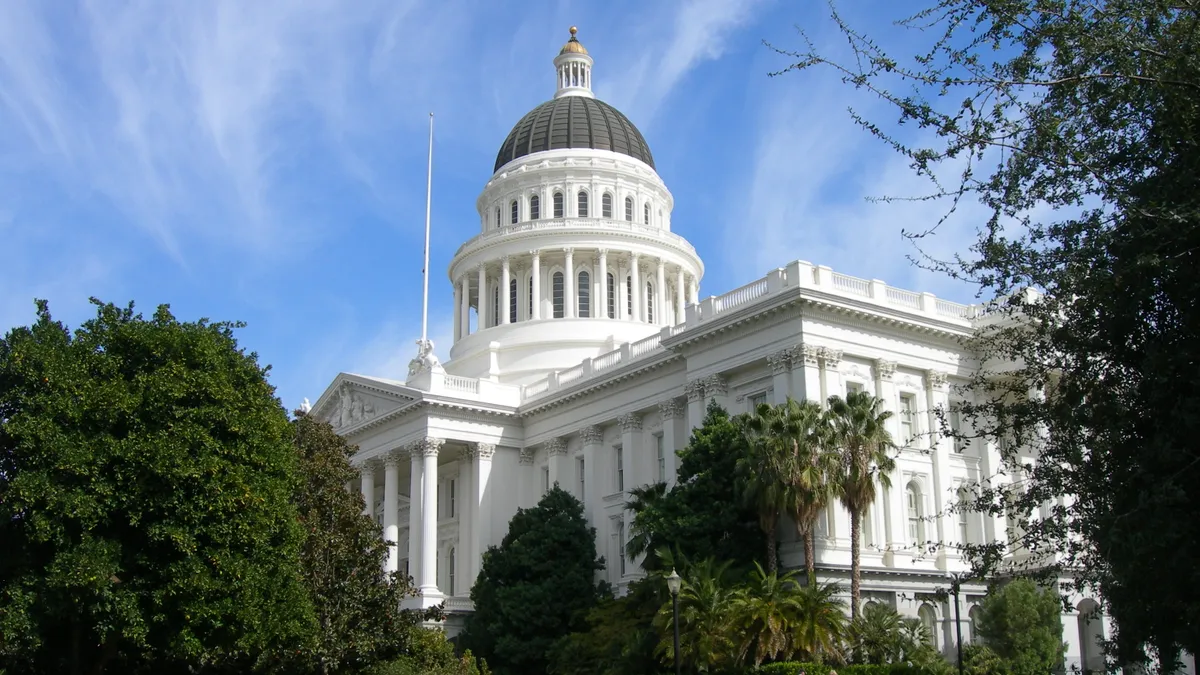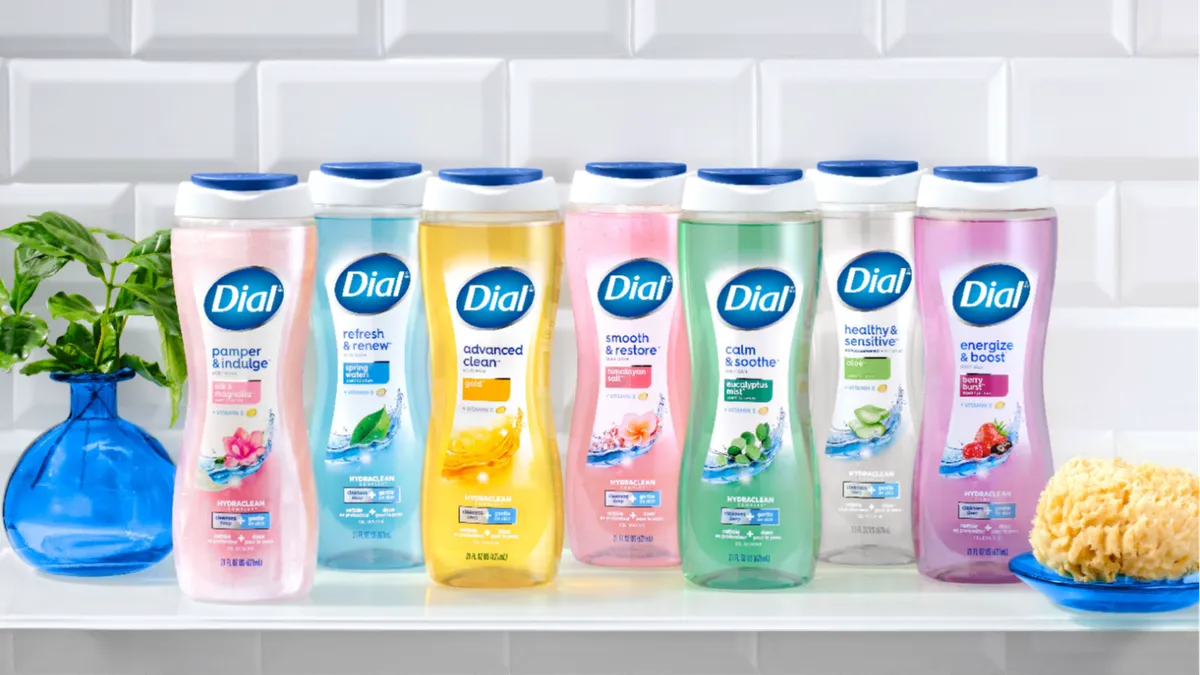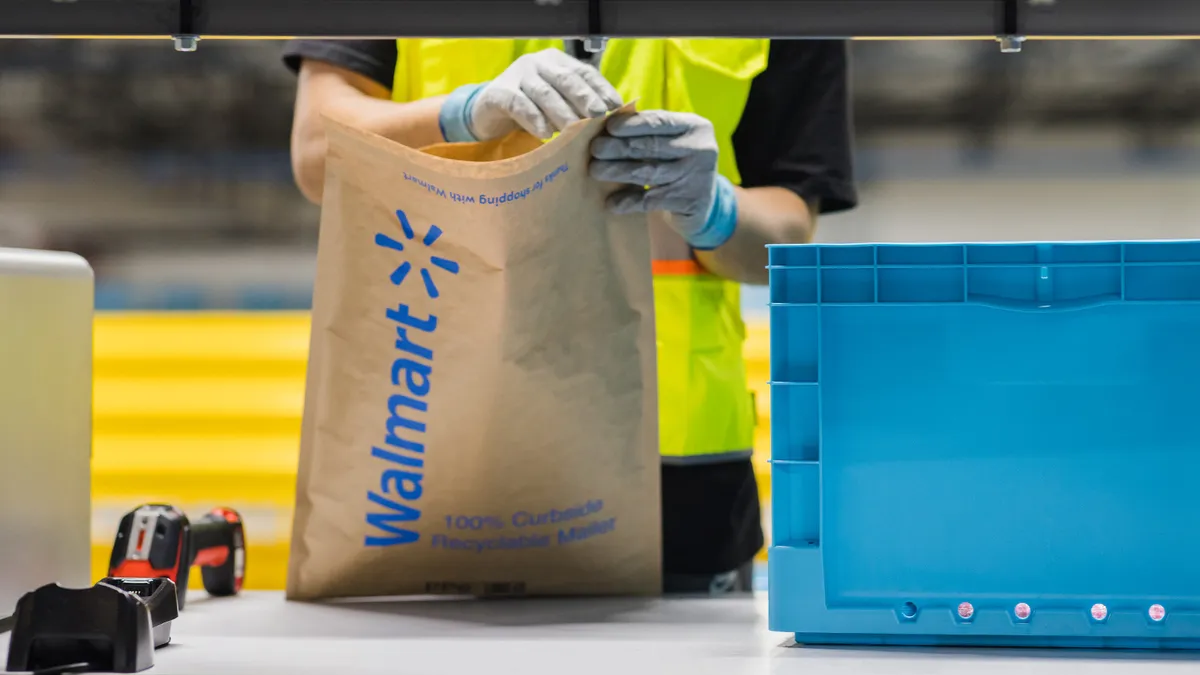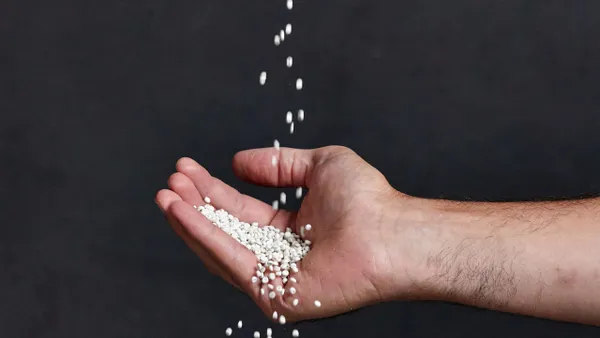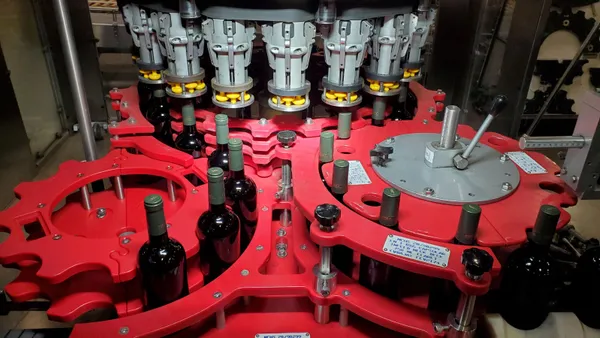Many people think about DHL as a third-party shipper and not necessarily a company involved in packaging choices. But there’s more going on behind the scenes, including an array of packaging services.
In many ways, the layered processes used at DHL Supply Chain resemble what occurs at Amazon warehouses or co-packing businesses: Employees help customers choose and use the best packaging options for each job, which may include tech-enabled packaging or reusables. While the business focuses primarily on secondary packaging, it also handles some of customers’ primary packaging needs.
Alicemarie Geoffrion is president of packaging at DHL Supply Chain in North America. She has been with the company for more than 12 years and helped to develop its packaging strategy. Geoffrion prioritizes upskilling for team members to ensure they remain on the cutting edge of the industry’s technological advancements.
Packaging Dive sat down with Geoffrion at Pack Expo International on Nov. 6 to discuss how labor shortages, automation and sustainability are affecting operations, in addition to what she expects for the busy holiday shipping season.
This interview has been edited for length and clarity.
PACKAGING DIVE: Describe DHL’s role in the packaging space.

ALICEMARIE GEOFFRION: Our goal is to provide end-to-end packaging services, and do it mostly inside of a distribution center to save on transportation and costs and make it a more sustainable solution for the customer. We're talking materials management all the way through production and fulfillment.
From the materials management perspective, we'll do all the demand planning for packaging. So our customers will come to us and say, “We need this display or this six pack out to market by X date.” We will strategically fill the demand, plan the materials and source the materials. Then we'll do the actual purchasing and the receiving of it, and we integrate that into our entire packaging supply chain, into the contract packaging.
We do all kinds of packaging: That could be kitting, bagging, cartoning, filling displays, doing new configurations, repack, blisters, clamshells. Anything you can imagine around actual packaging of products.
We manage that all the way through distribution. For the majority of our customers that we're working with, we have put together an end-to-end packaging solution within the distribution center. DHL Supply Chain operates 549 DCs throughout North America — those are all our big customers across CPG, retail, tech, life science, healthcare — so we're managing their warehouses already.
We have the actual products inside our warehouses. We have put packaging solutions inside those warehouses so that if a customer wants to do some type of customization, or wants to do some type of display or tray or whatever, we can pull the product direct from our inventory; we don’t have to send it out to a converter. We can do all that customization and that packaging inside the DC and then put it right back inside of inventory to be fulfilled, or it may go out to an end retail location, or if it's an e-commerce type packaging it might go out to an end customer.
What packaging trends are you seeing right now that affect how you operate?
What we started to see over the last couple of years was the need to automate. That started during COVID. Labor was short, and the wages started to increase more because the demand was there, but the supply was not. We started to see that some of the automation, innovation and technology became a better ROI, because basically the wages have gotten so high. I think 70-plus percent of our operations now for packaging have some type of automation — that could be a robotic arm, it could be a bagger, it could be something to make the entire tray-building process easier.
We're spending a lot of time on not just the automation, but data analytics, leveraging AI and doing predictive analytics around our operations for our customers. Some examples of that are: We are building models to help with the pricing to make it much more predictive, which removes costs from the entire process.
We're also doing a combination of taking the technology that we have and leveraging all that data to make better decisions. So an example is we put what we call LineView inside of our packaging operation, a proprietary tool that we built internally at DHL. It’s a camera-based system that looks at all parts of a line — in between the very beginning of the line and the very end.
Now we're capturing hundreds of thousands of pieces of data for a packaging line, and we can say, “Wait a minute. Now we're seeing just a slight change in this part of the line; what is going on?” And then we can go to that line and we can say, “Well, there's a bottleneck here.” Or we can see that we have to push this process forward or push this process back to make it more efficient.
Beyond using those tools on the lines, are you finding more technology on the packages themselves, such as for traceability?
For certain customers — our life sciences, our healthcare customers — we have seen a trend to get more into the thermal reusable totes. With those, we can track the actual containers, we can track the temperatures, with the smart packaging.
We’re managing those as a fleet. Those assets are being managed just as we would manage the trucks. We see it in the pharma world, we’re starting to see it slightly in the tech world. But we certainly don’t necessarily see it in the consumer world, because the price of the products is so much lower.
You mentioned sustainability. We’ve seen more companies, especially in e-commerce, move toward lighter and less packaging. How is that affecting your operations?
We do the materials management for quite a few of our packaging customers. Often we go back to them and say, “This is over-engineered. There are certain pieces and parts on this that make it not recyclable.” There's a constant conversation around every packaging and every sourcing that we do to make sure that we are optimizing it from a sustainability perspective.
One of the things we've also been doing — because there's a lot of e-commerce orders that go out now — a lot of the packages now are designed that when the end customer gets it and they open it and they get their product, if they don't like it, they can just flip it around and use that container and get it right back out into the process. We’re making sure that we are designing the actual shippers so customers know to reuse those if they're sending products back.
We're looking at the materials themselves, we're looking at the recyclability of it. We're looking at the actual package and the structures to make sure they can have multiple trips in that supply chain.
We do a lot of pilots with our customers. There are times where we go through a pilot and we just say this doesn't make sense — from a labor perspective or from a cost perspective — and we cancel those pilots. But there are others that if they make sense, we take them through and start to roll them out to other sites as well. It's a constant collaboration between us, the customers, and often a supplier.
Talk a little more about the balance of cost and sustainability you're working on with your customers.
It's starting to trend where things are becoming more cost effective from a sustainability perspective. A few years ago, we would have conversations with customers and they’d say they want the most sustainable solution, so we would put the most sustainable solution in front of them. And they're like, “We could never do that. That's too much money.”
But the industry has started to evolve, and price points have started to come down. The market has changed to where it actually is so much easier to have a more cost-efficient, sustainable solution than it was years ago. Now I think it's extremely common to be able to go out there and buy the most sustainable and recyclable materials.
We’re coming up on the typically busy holiday shipping season. What are you seeing so far?
From a volumes perspective, this is peak for many of our customers. We’re starting to see an increase in volumes.
We have seen a shift. Before, we may have seen a lot of customization from the packaging perspective. But now we're starting to see maybe a little less customization and more just getting something out to the consumer.
We've seen a little bit of a drop in some volumes — last year was probably where it all started. This year, we're starting to see it come back up a bit, but they're not quite where they used to be pre-COVID.
We've gone through cycles of too little inventory and too much inventory, and now to stabilized inventory, across the board. But there’s still some lighter volumes in some areas.
What are you looking forward to in 2025?
Our big focus for 2025 is going to be more digitalization — more focus on data, information, predictive analytics. But also more focus on putting that information in front of the customer with the correct insights.
We're looking at automation ... from a smaller perspective. We're starting to see our customers do smaller runs and make custom changes to these runs. We’re looking at how we can still leverage automation — maybe small automation, smaller partners, things that can handle very fast changeovers.
And then, we’re making sure that our talent has a great skill set to be able to leverage all the technology. We now have bots in our facilities, assisted picking bots, and we have robotic arms. So our talent needs to have a higher level of skill set to work this new technology. We have a lot of training and talent management programs that we've put in place to make sure we can handle that as the industry changes.










